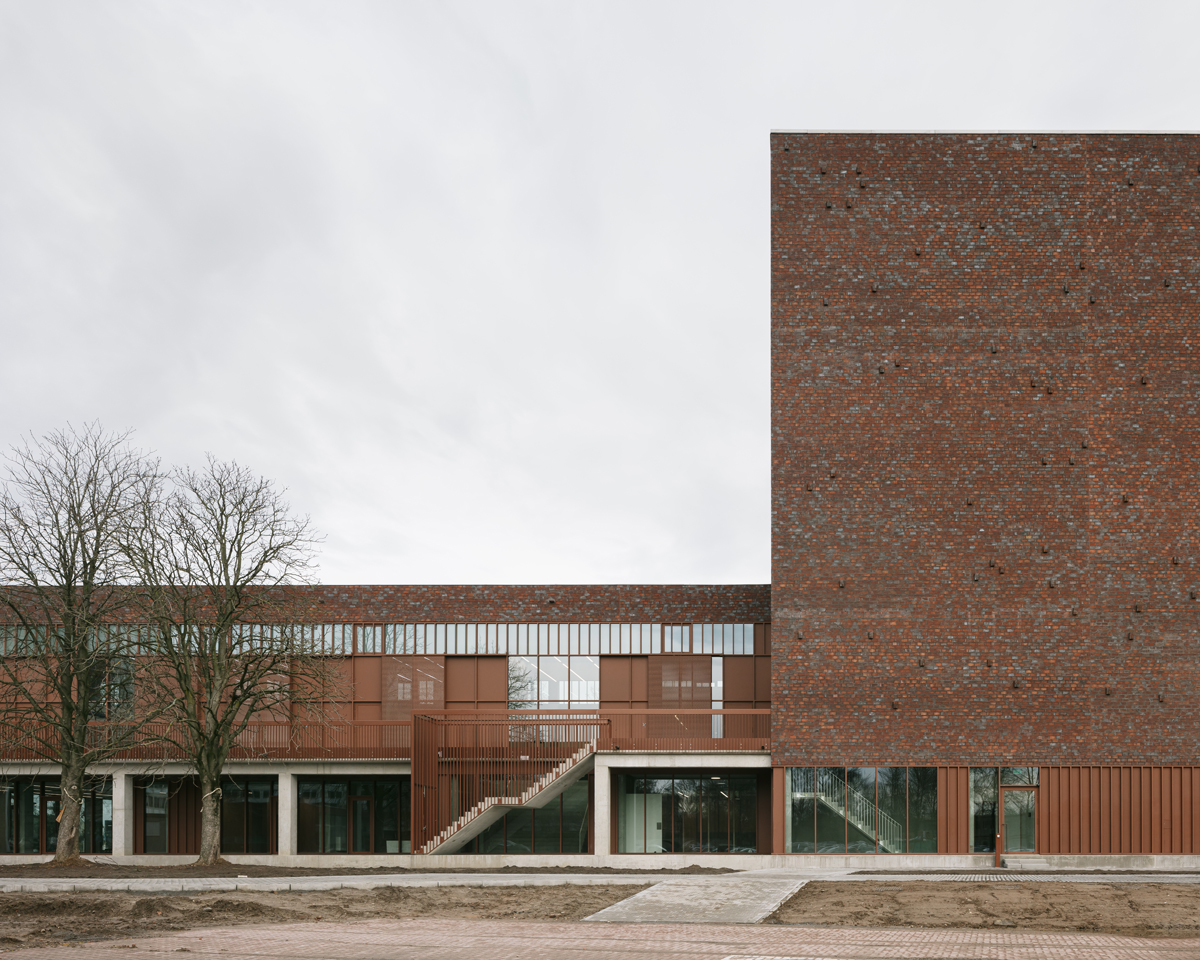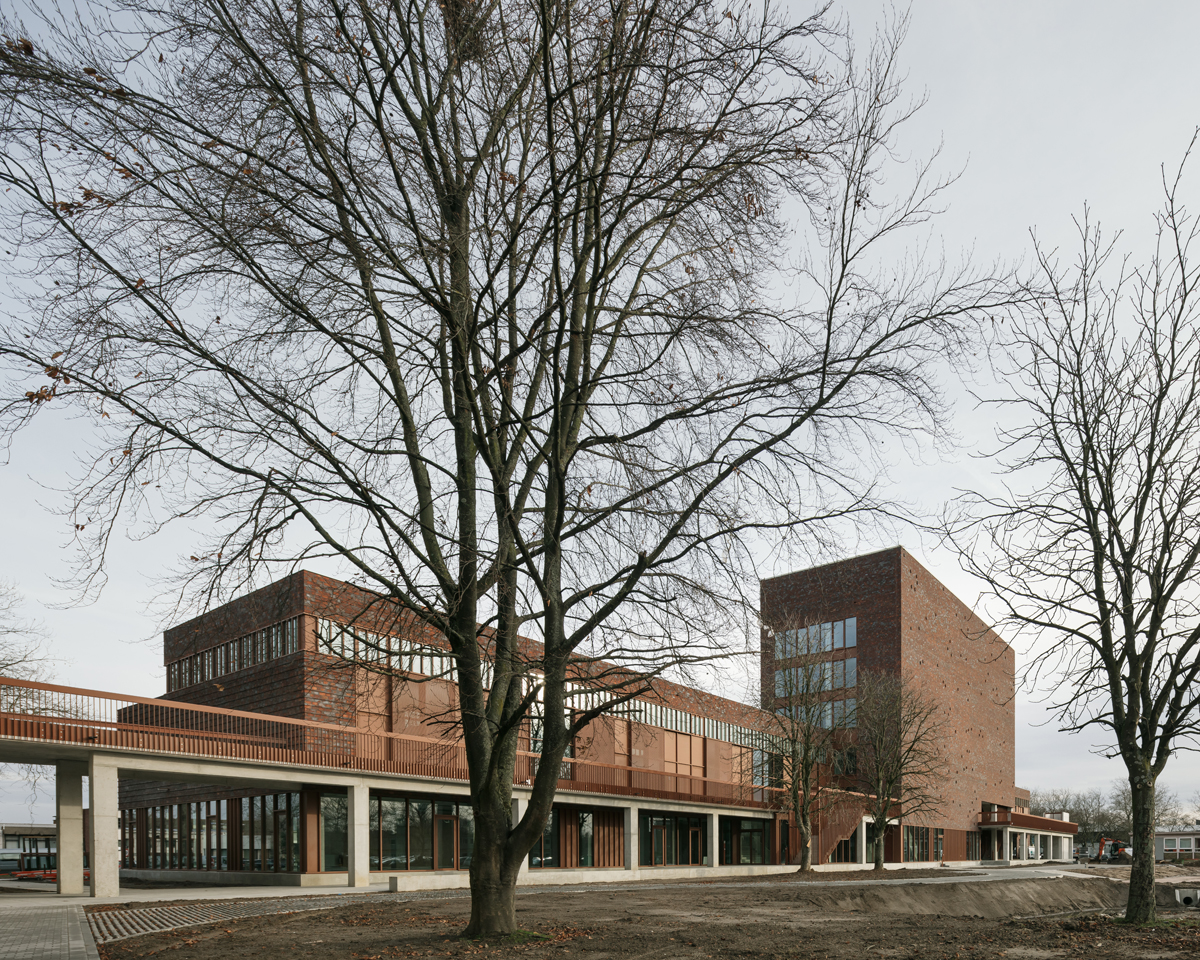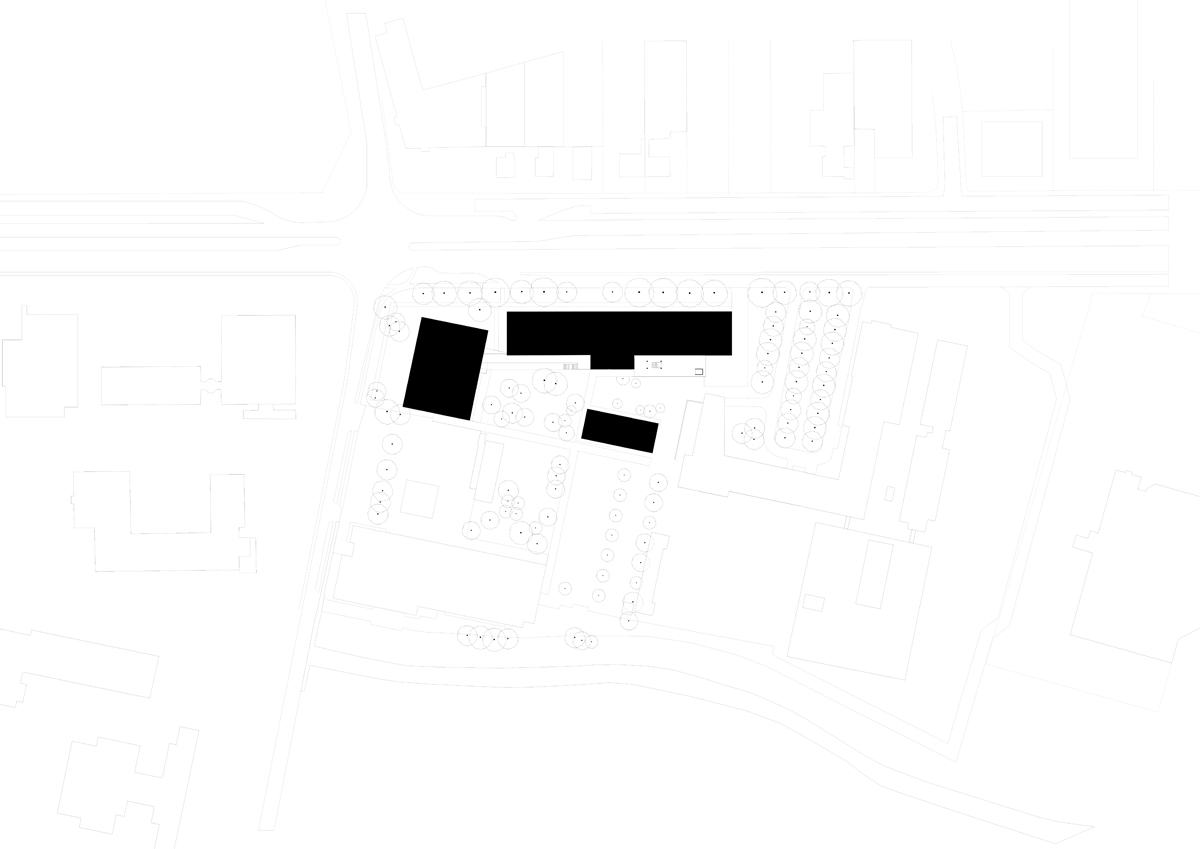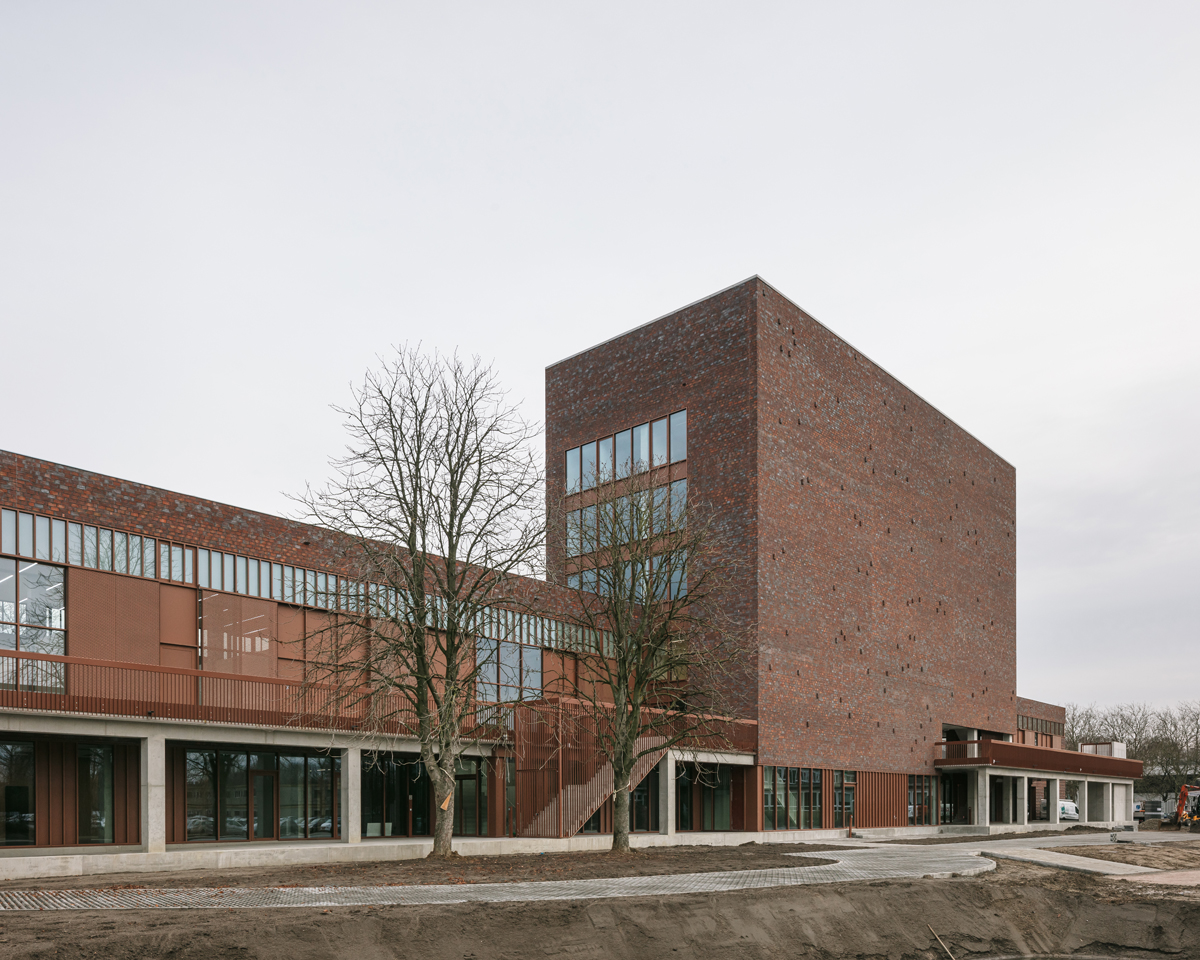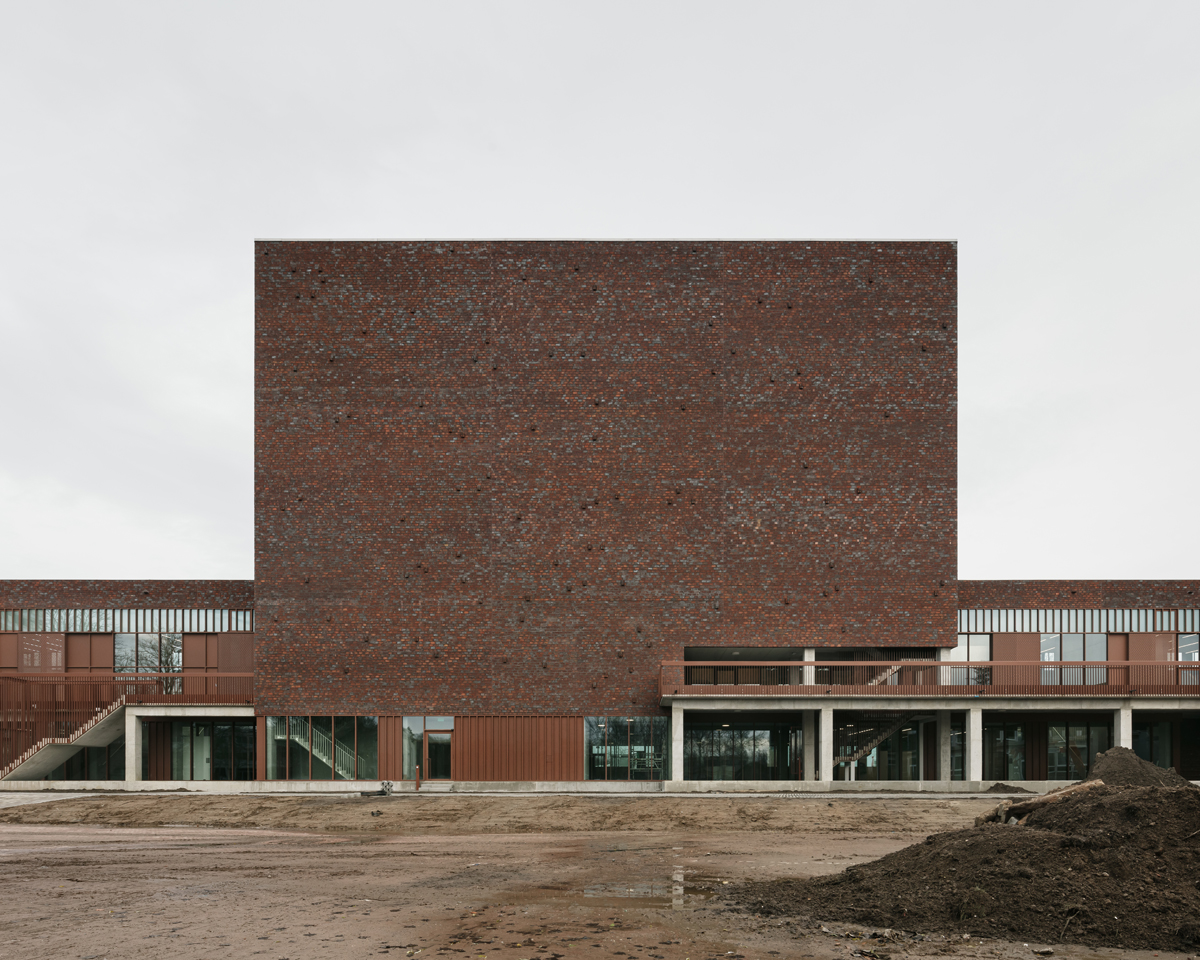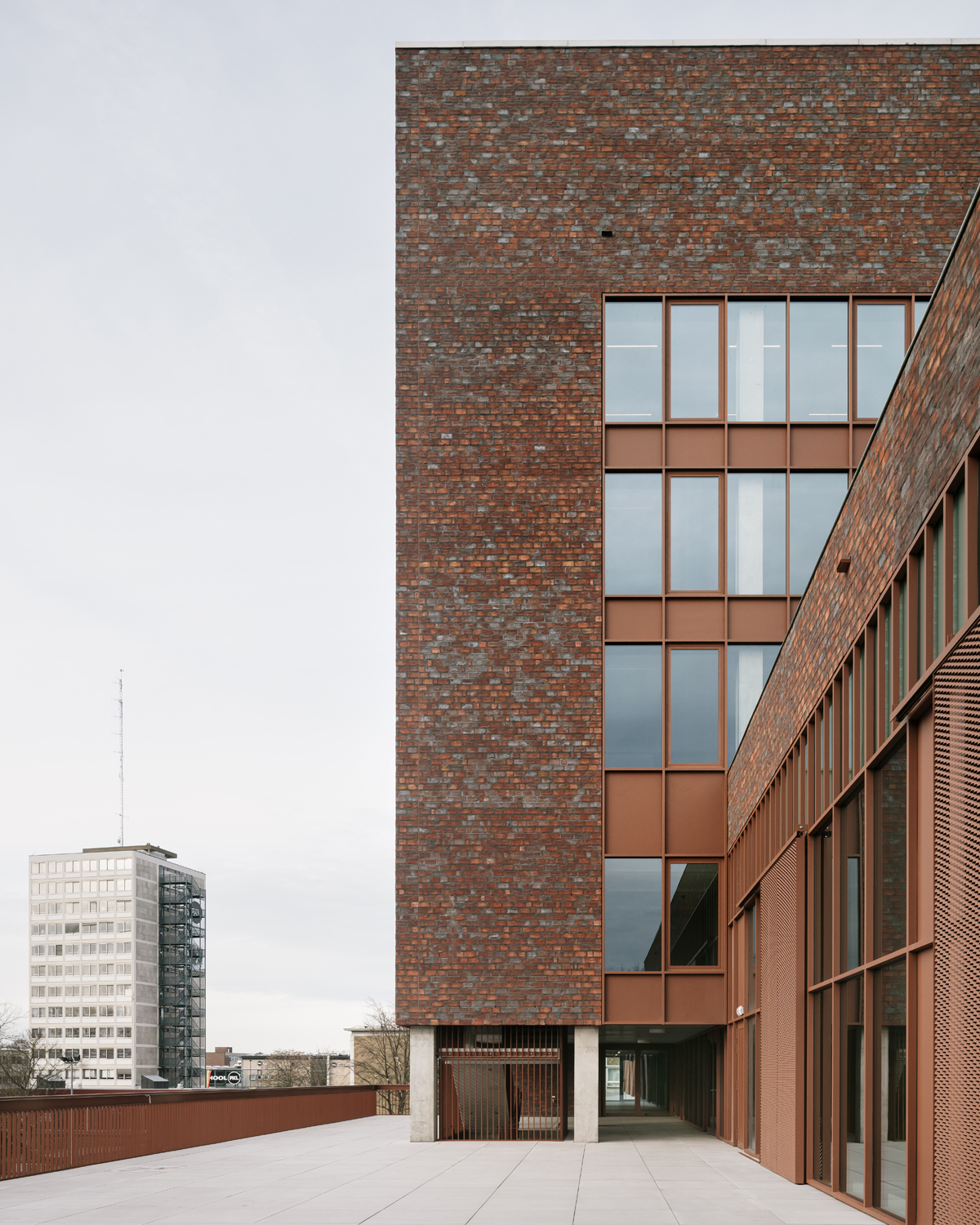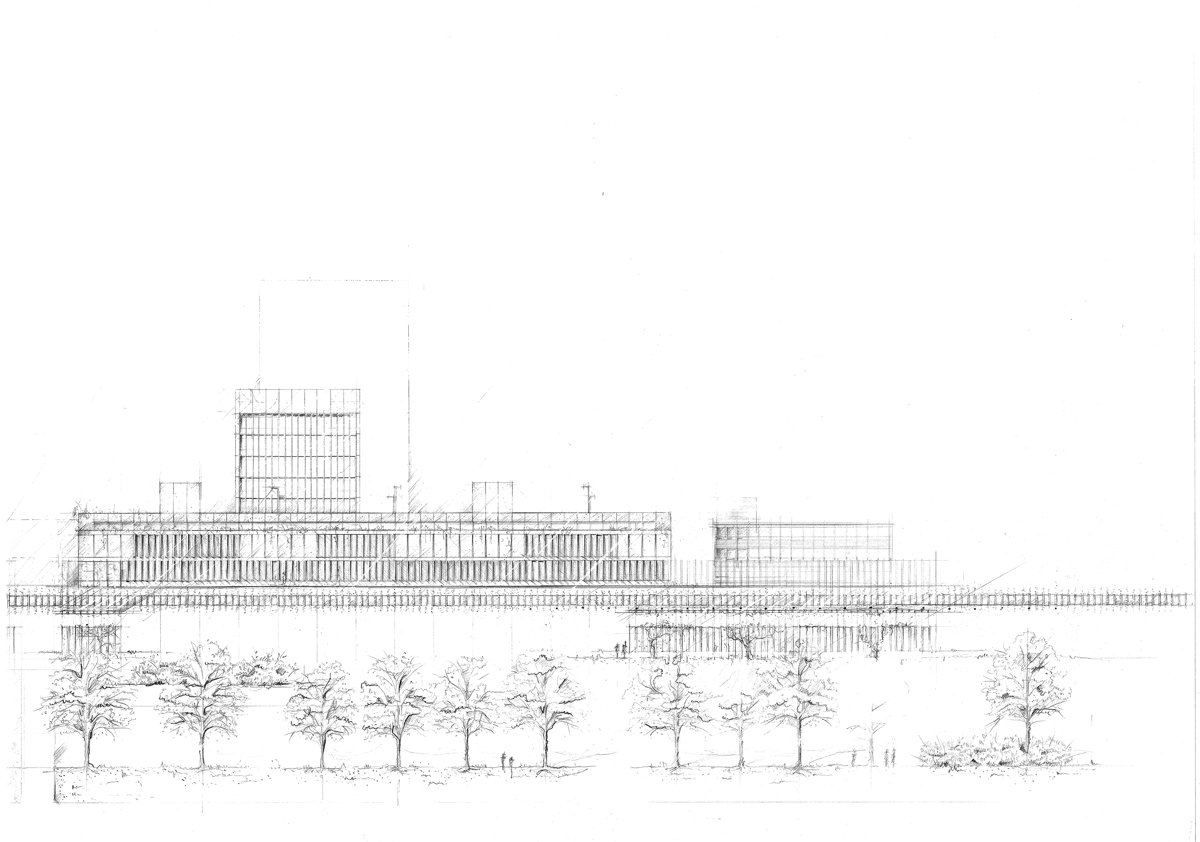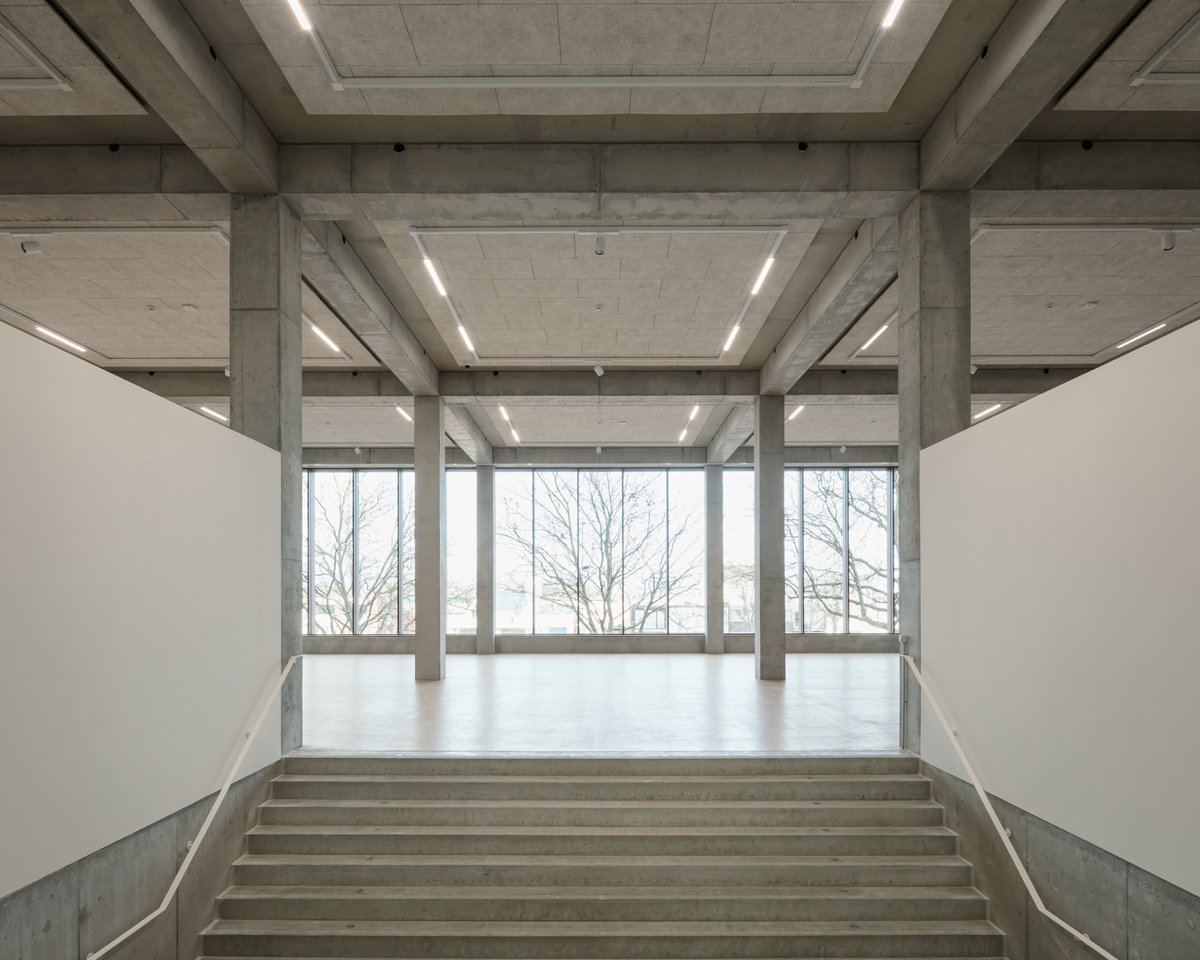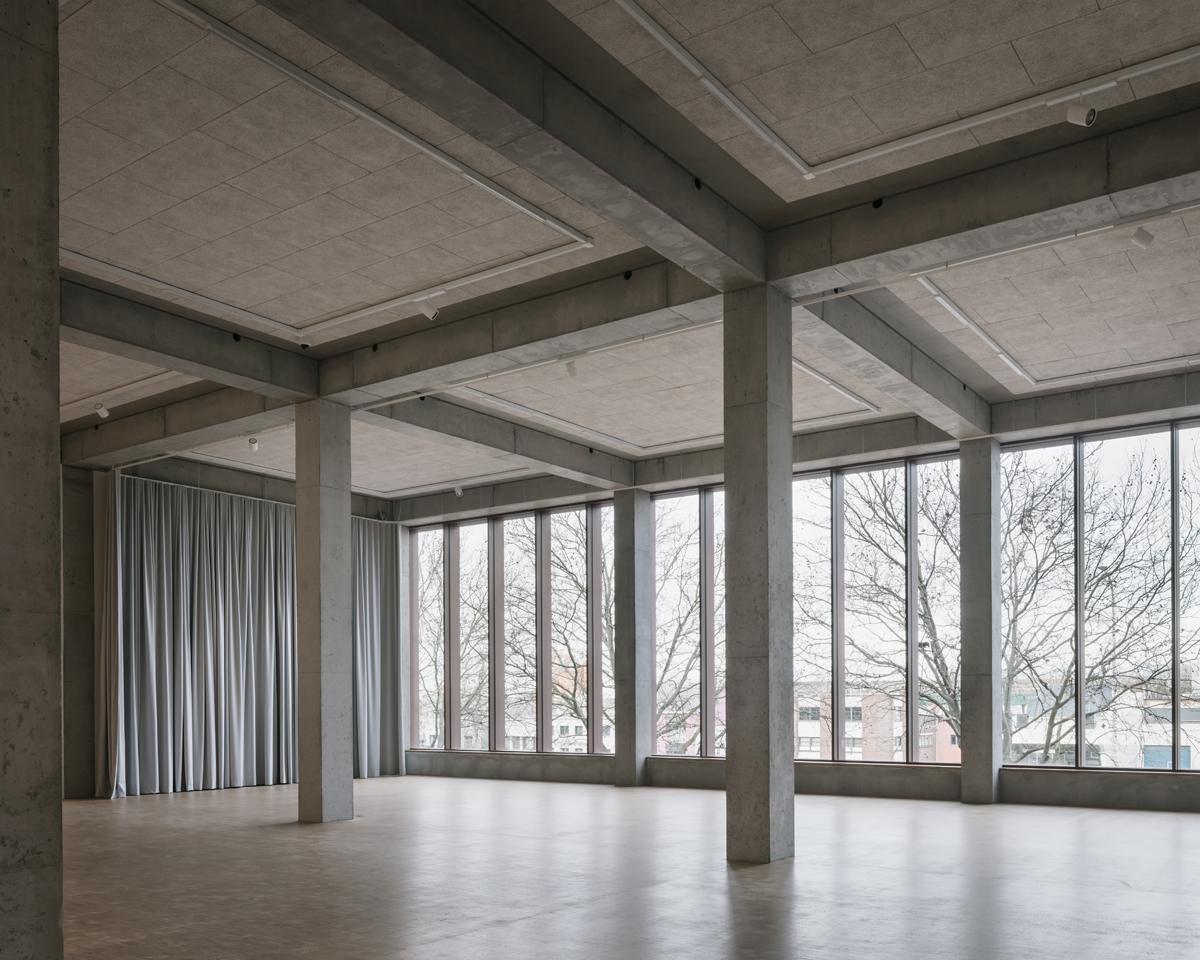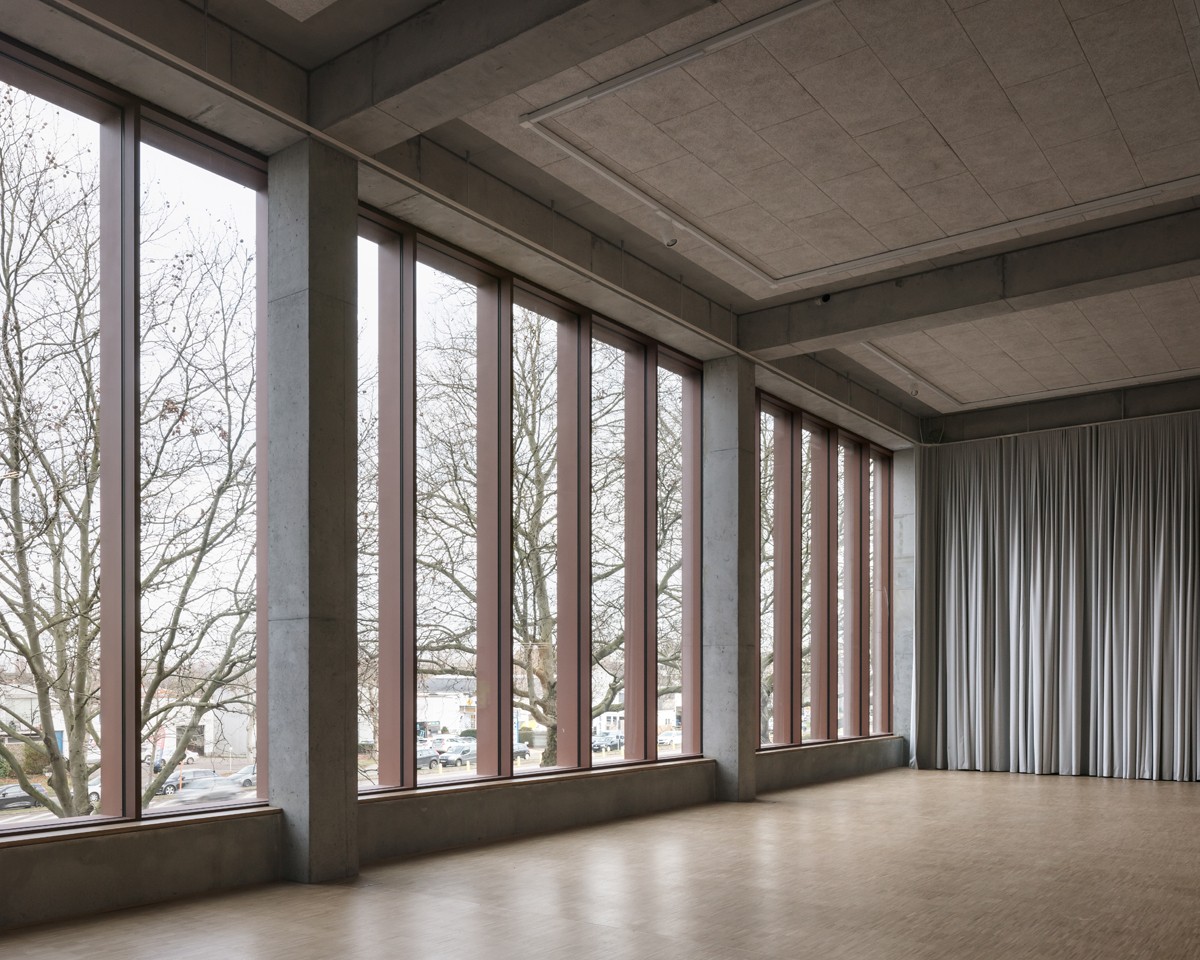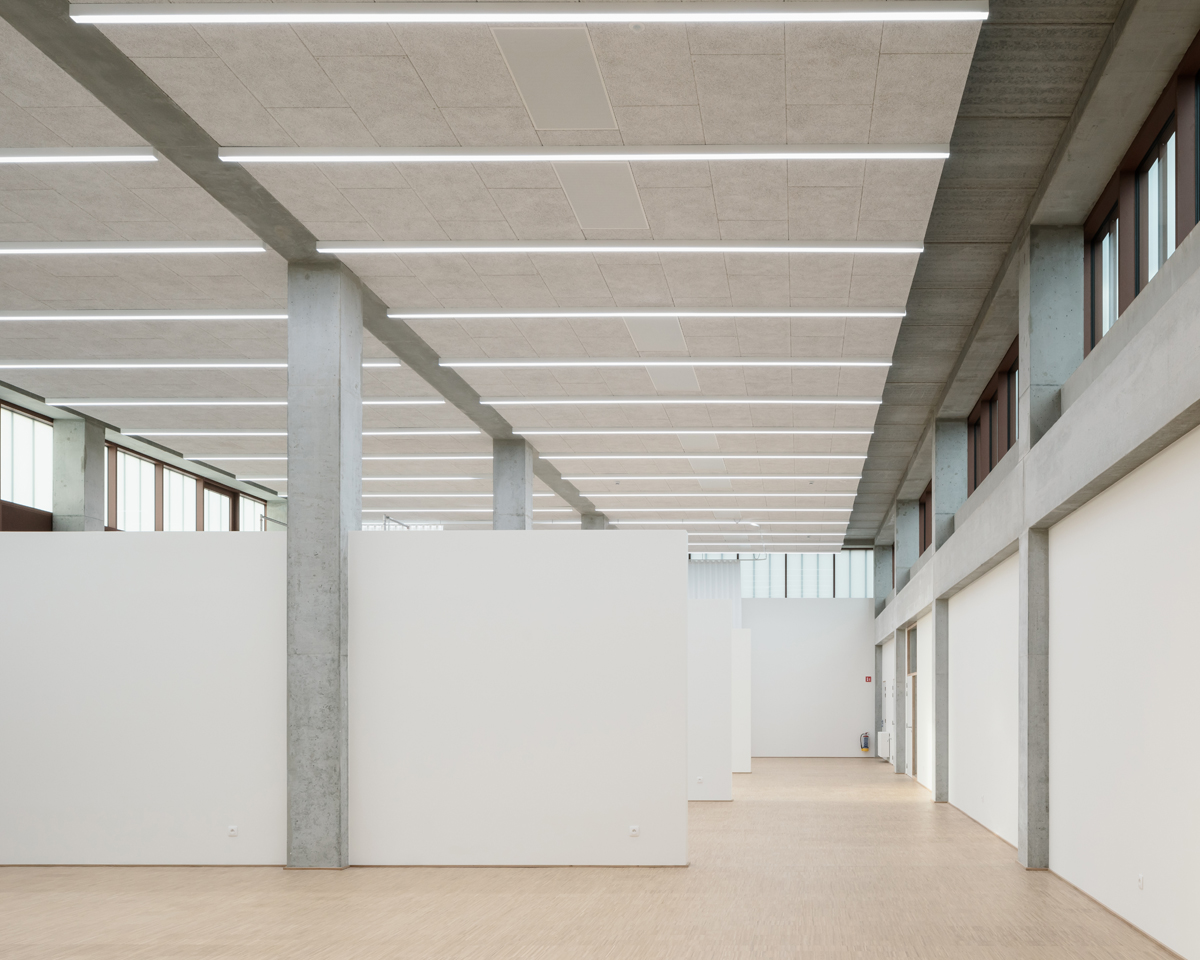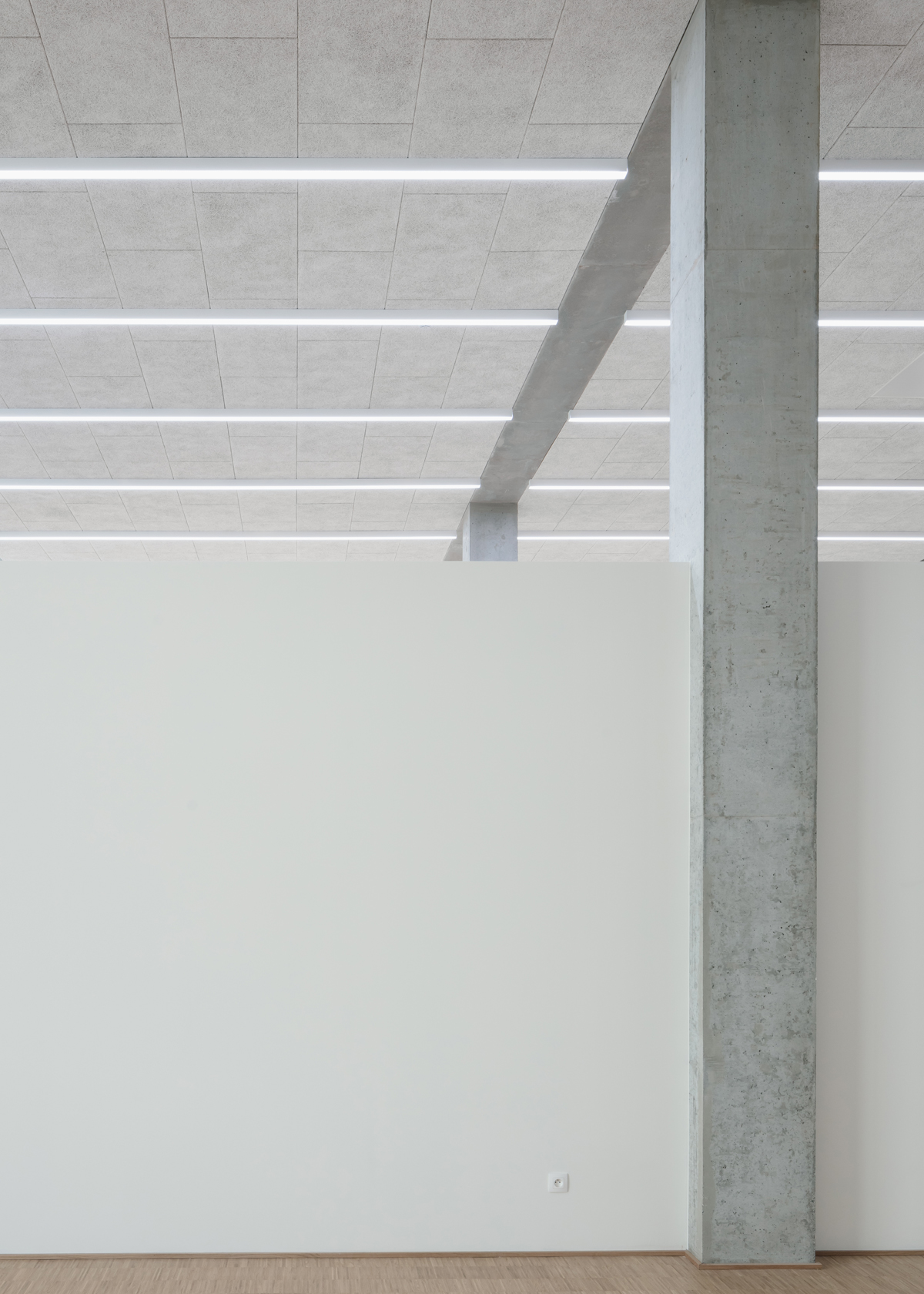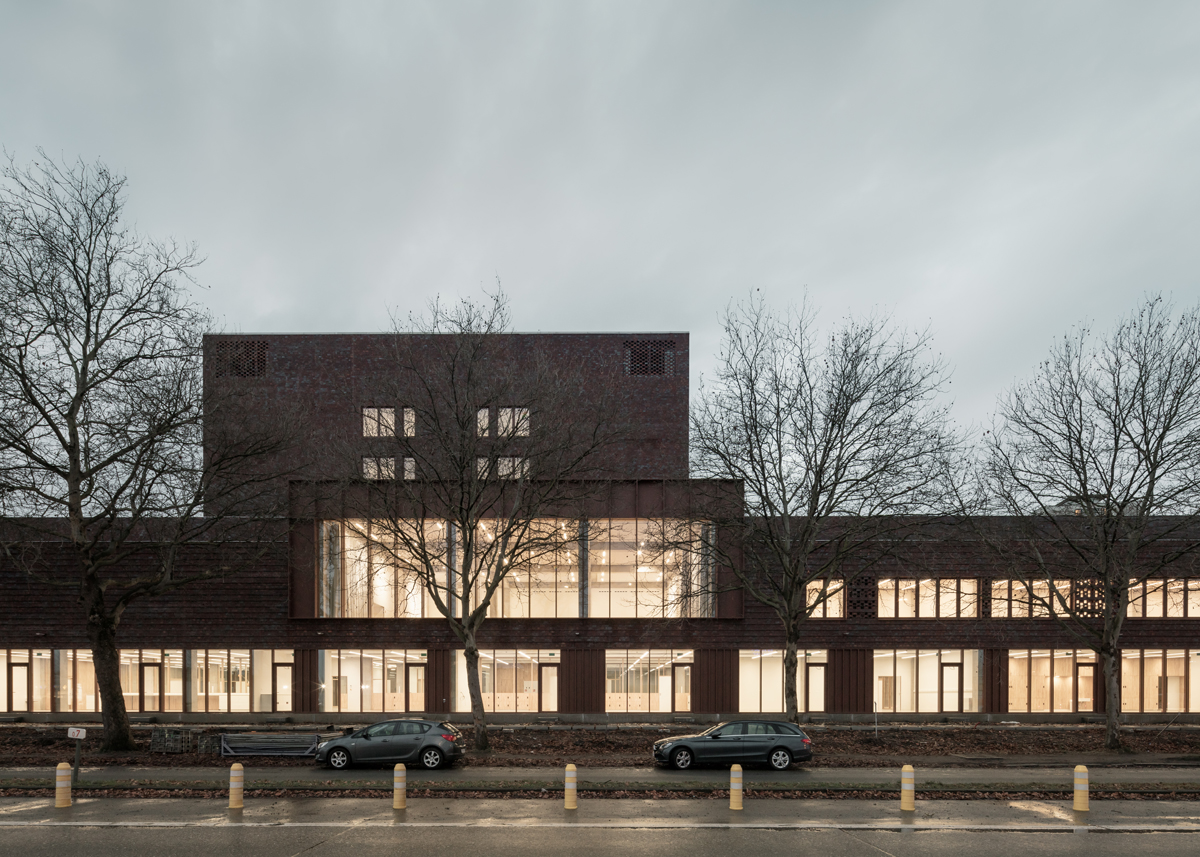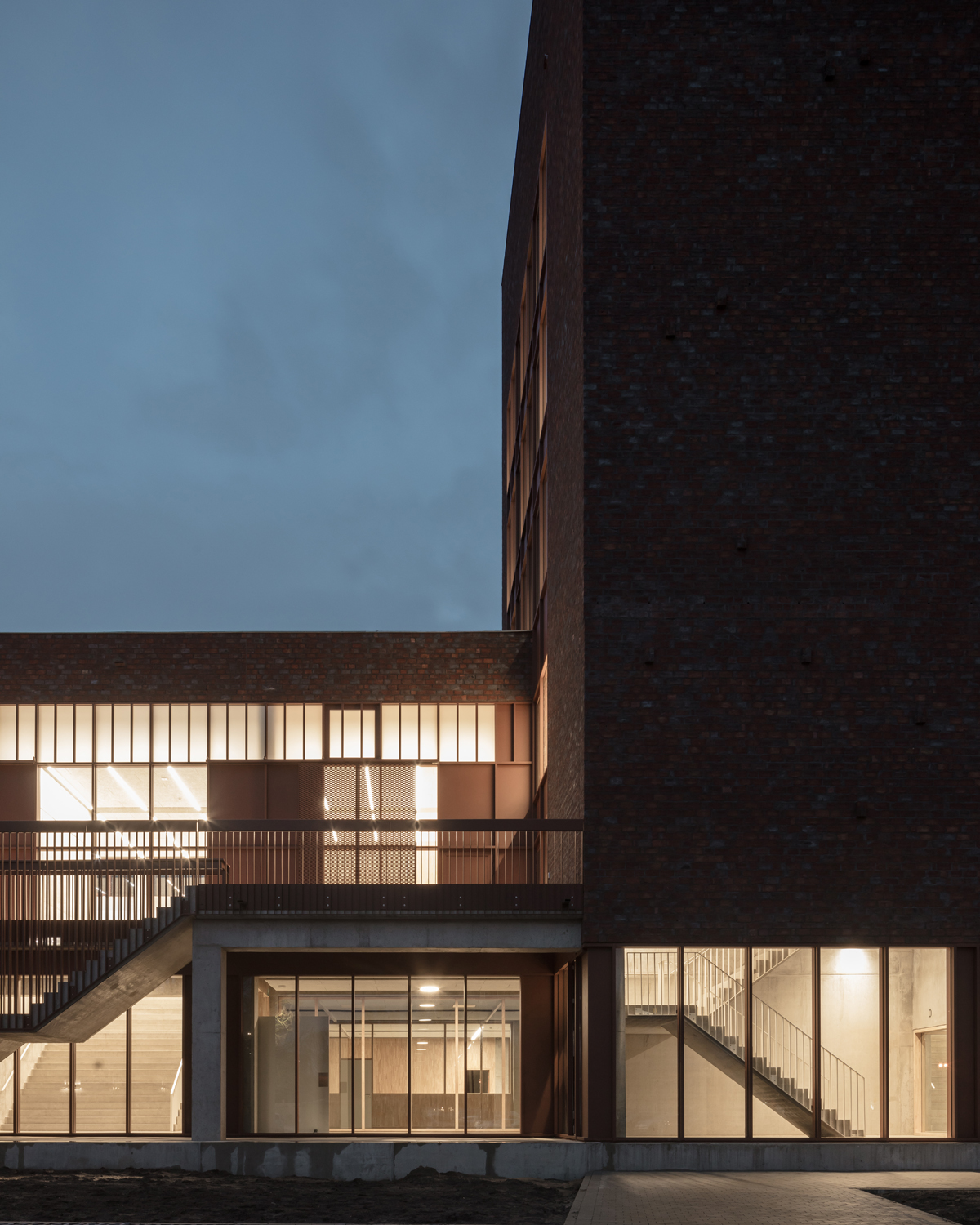The new art school on the Gouverneur Verwilghensingel in Hasselt (Belgium) does not present itself as one would expect from a typical institute on a city circular road. A fairly closed façade on the road side exchanges the characteristic glass case architecture for room for mystery. After all, the arts should not be displayed as vulgar merchandise. With a deliberate contrariness, the art school prefers to address itself to the challenging environment of the urban campus rather than to the domain of the passing cars.
The design as a whole reflects the existing modernist PXL Conference Building, located on the other side of the parking lot. The fragmented interspaces are stripped from their undesirable parking spaces with unnecessary paving and replaced by pleasant meeting places. This creates a connective network of natural open spaces between the school buildings, which directs the soft mobility flows and extends into the Demer area behind it. A genuine campus model.
The school building derives its topology from the present-day artists’ studio and the process of art creation itself. The same industrial, minimalist ordinariness constitutes the starting point for the design, which chooses an uncompromising, sublimed concrete structure. The rigid grid of columns can be filled with studios across two storeys by introducing light walls and false floors. The grid is extended across the terraces, resulting in defined outdoor workspaces. The possibility of creative manipulation meets the changing needs of both the moment and the users. Contradictorily, the radical structure of the building creates a tolerant background, which can be adopted by various usage scenarios, without ever being absent. The building as a permanent phase of creation and mutation.
Such an interpretation exchanges the classic school typology of ‘classrooms along a corridor’ by circulation through studios. Art students are surrounded by the richness of various art disciplines and works in transition. Flexibility and polyvalance driven to extremes, however, result in non-architecture. Adding two generous staircases and a tower-shaped volume give direction to the functional grid of columns. At the centre of the grid, there is an exhibition room, a perfect two-storey space where students and lecturers can show their works and are encouraged to enter into a debate. A large window gives the artists a view of the world.
Adding a student hotel, with catering and recreational facilities, completes the triptych of communicating towers. The ambition of an effervescent campus demands a functional mix that encourages usage throughout the day. The endless performance.
